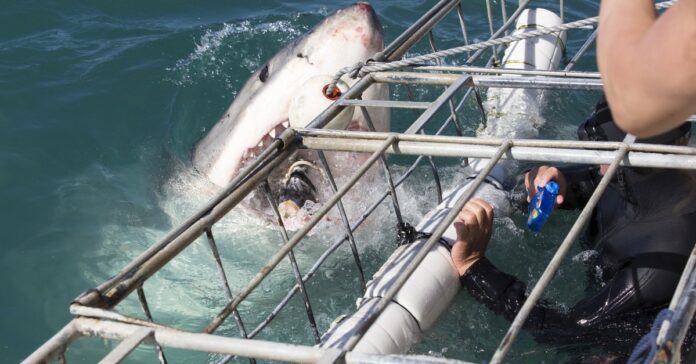Are you looking for something a little “more” from your holiday? Ready to test your limits by embarking on a trip that’s guaranteed to put you outside your comfort zone? Keen to try something a little extreme? These days more and more people are heading to some of the farthest-flung corners of the earth in search of something new and adventurous. Let me give you a few tips and suggestions, a few ideas to help you plan the ultimate destination for an intrepid traveler.
These trips are a mix of epic hikes, extreme sports, and creative ways to see some of the planet’s most beautiful landscapes. These six activities are guaranteed to thrill — and quite possibly change your entire outlook on life!
Sonthaya / Shutterstock.com
1. Trekking To Everest Base Camp At The China-Nepal Border
At 28,996 feet above sea level, Everest is the highest mountain on earth and is known the world over to climbers, hikers, and couch potatoes alike. Altitudes above 26,000 feet are considered “death zones” because humans struggle to survive there. This is definitely one place that is best left to the truly experienced. You ideally need to have climbed at least three 20,000-foot peaks, one 23,000-foot peak, and one 26,000-foot peak before you consider Everest. But if you are one of the lucky few who have the experience, time, and money needed to reach the summit, then definitely go for it!
Fortunately, for those who wouldn’t class themselves as mountaineers, Everest Base Camp is still an option — and without the many dangers involved in attempting to reach the top. Most treks from Kathmandu take around two weeks, and this epic journey will provide you with plenty of adventure, and at the end of it all, gazing up at the highest point on earth will be the reward for all your hard work.
While teahouse hospitality and magnificent views en route are to be expected on an Everest Base Camp trip, most treks are not actually allowed to stay at base camp (it requires special permission) and most trekkers simply visit base camp for a photo opportunity before descending to nearby Gorak Shep to sleep. There are a few companies, however, like Highland Expeditions, who do offer the unique opportunity to sleep in the shadow of the mighty mountain, and if your trip coincides with peak summit season, when groups of climbers are in residence, you may have the opportunity to chat with some of those brave climbers who are making their final preparations to head to the top. If you are lucky you may even witness teams setting off up the notorious Khumbu Ice Fall at the start of their push for the top.
Pro Tip: Summiteers usually arrive at Base Camp in April and May, so plan your trip accordingly. Keep yourself healthy, too. To avoid potentially infecting the climbers, trekkers with illnesses will not be allowed to stay at Base Camp.
 Fabian Ponce Garcia / Shutterstock.com
Fabian Ponce Garcia / Shutterstock.com
2. Climbing Mount Chimborazo In Ecuador
Sticking with the mountain theme, standing at 20,565 feet, Mount Chimborazo is the farthest point from the Earth’s center. Most people believe Mount Everest is the highest point on Earth, and while the summit of Mount Everest is the highest point above sea level, Mount Chimborazo is actually the highest spot above the center of the Earth, making it the closest place to outer space. Although Chimborazo has glaciers on its peak, it is possible to climb to the top and gaze on down at the world spread out below.
Mount Chimborazo is a difficult but not technical climb, and most of the ascent is a steep trek up the side of the mountain. There are several routes for brave climbers. The El Castillo route is the standard route used by climbers, ascending 4,200 feet up the west side of the mountain and taking 8-12 hours to the summit, then another 3 to 5 hours to descend. All this effort does require good stamina and endurance, though, as well as good adaptation to altitude. Climbers taking on Chimborazo are advised to have previous experience with alpine climbing. If you don’t, beginners can take an alpine climbing and glacier trekking course with their guiding company to learn proper climbing techniques and gain familiarity with the gear. It’s important to take your training and preparations seriously. The success rate of Chimborazo depends almost entirely on the climber. Those looking to climb Chimborazo might like to check out Ecuador Eco Adventures.
Pro Tip: For those wanting to witness this natural wonder without leaving civilization, gazing at the beauty of this magnificent mountain and the surrounding scenery can be just as rewarding. The nearest town to Mount Chimborazo is Riobamba. Here you can zip through narrow streets, visiting the city’s top attractions like the Museo de Arte Religioso, a beautifully restored 18th-century convent that showcases 200 religious pieces in 15 different rooms, before shopping at Feria Artisan market. If you are looking for somewhere to stay, try the highly acclaimed Hosteria La Andaluza.
 mezzotint / Shutterstock.com
mezzotint / Shutterstock.com
3. Biking Down The Death Road In Bolivia
Have you heard of The Death Road? With no guard rails and frequent rain and fog causing limited visibility, the road has claimed numerous lives. Reports say that around 200 to 300 people die on this road every year (this number is a combination of motorists and cyclists), and because of this, the road is known as one of the world’s most deadly. This infamous narrow dirt road is cut into the side of the mountain and the descent is at such a rapid rate that riders are practically hurtling down the rough terrain. On one side of the road is a sheer drop, and on the other side are enormous rock overhangs and cascading waterfalls. It’s a thrilling ride that will have you hanging on, with white knuckles, all the way down.
While this harrowing stretch of road in Bolivia is undeniably dangerous, numerous people do summon up the courage to cycle it, and for those looking for an ultimate adventure, this definitely fits the bill. Not for the fainthearted, the 43-mile-long stretch through the Cordillera Oriental mountain chain links the Bolivian capital of La Paz with the low-lying city of Coroico via one seriously steep road. The road twists and turns, and I wouldn’t recommend looking off to the sides — it’s a 2,000-foot drop!
Most of the road is around 11 feet wide and some sections are unpaved. With warm, humid winds from the Amazon hitting the slopes of the Andes and bringing heavy rain and fog, visibility isn’t great. Mudslides and rockfalls are common, and sometimes you’ll even find waterfalls in the cliffsides. The stretch of road takes about 5 hours to complete, so it’s not a quick trip by any means, and it’s likely you’ll never let off the brakes because it’s entirely downhill and steep. At some points, the road is so narrow it feels like only one bike can pass at a time and it barely seems possible that a car or bus would ever consider driving this route. All along the road are crosses in remembrance of lives lost, and in the misty surrounding, it all feels unbelievably eerie.
Pro Tip: Madre Tierra Travel offers Death Road cycling tours as day trips departing from La Paz.
 cordelia bua / Shutterstock.com
cordelia bua / Shutterstock.com
4. Whitewater Rafting The Zambezi River In Zambia
Whitewater rafting through the powerful rapids of the Zambezi River is definitely not for the fainthearted. Considered to be one of the best rafting experiences in the world, this Grade 5 “extremely difficult” water run will have your palms sweating, your knuckles white, and your heart pounding. There are many places in the world where you can white water raft, so why the Zambezi? Sad to say, the Zambian and Zimbabwean governments currently plan to move ahead with a $4 billion hydroelectric dam project that will flood the river gorge almost back as far as the famous Victoria Falls, displacing villagers and wildlife and putting a stop to rafting. So run this great river while you can!
Whether you choose a day or half-day trip from Livingstone, or maybe a multi-day, beach-camping expedition, this adventure is really up there with the world’s greatest river journeys and extreme travel experiences. You’ll tackle hair-raising rapids with names like Oblivion and The Devil’s Toilet Bowl, there’s a chance you’ll spot hippos lazing in the channels or even crocodiles lying on the river bank. Rafting the Zambezi is something I just keep coming back to do over and over again. I’ve been down this river more times than I can count, and I’ve loved it every single time.
Pro Tip: Book your trip on the Zambezi for some time between August and December; that’s low water season and the best time for rafting.
 i viewfinder / Shutterstock.com
i viewfinder / Shutterstock.com
5. Bungee Jumping In New Zealand
New Zealand practically invented bungee jumping when the Kawarau Bridge Bungy, the world’s first bungee, opened in 1988. Here you can join around 38,000 annual visitors and make the 141-foot jump from the South Island’s historic, steel-framed Kawarau Bridge (you can even touch the water if that’s your thing!). Alternatively, if you are feeling really brave, how about the Nevis Bungy, which at a whopping 440 feet is the highest in the southern hemisphere, and has 8.5 seconds of terrifying free-fall? Quite possibly the longest 8.5 seconds of your life! Not only is bungy jumping a fantastic thrill in itself, but both jumps are located in truly gorgeous surroundings, not far from Queenstown.
Pro Tip: Check out AJ Hackett Bungy New Zealand to plan your adventure, and if throwing yourself off with a cord tied ’round your ankles seems a little too extreme, perhaps the slightly more sedate zip line, or maybe “the catapult,” might be more your thing.
 Mogens Trolle / Shutterstock.com
Mogens Trolle / Shutterstock.com
6. Swim With The Sharks In Gansbaai, South Africa
I don’t know about you, but the movie Jaws had me petrified of sharks as a kid. If you are the same, then the waters around South Africa’s Gansbaai are bound to bring those memories flooding back. Gansbaai has some of the most treacherous waters on Earth — this is prime great white shark territory. “Shark Alley,” a small channel of water between Dyer Island and Geyser Rock, is home to the densest concentration of these creatures, and it’s become a popular destination for tourists who want to get up close and personal with these deadly creatures by jumping on board a shark cage diving tour. Imagine being underwater in a cage and watching these terrifying beasts circling around you, so close that you can count their razor-sharp teeth! If this sounds a little overwhelming, you can go whale watching instead, or perhaps on a cruise to see penguins, seals, or dolphins.
Pro Tip: Marine Dynamics would be my recommendation for the company to do a shark diving trip with. They have the only purpose-designed boat for shark cage diving, are the only company that guarantees a marine biologist on every trip, and are the only company that has a registered conservation trust. They also take your safety really seriously, which seems a pretty important criterion to me! So there you have my round-up of extreme travel experiences that I’ve tried and lived to tell the tale!
Hopefully I’ve got you excited enough to head out on some of your own adventures. For more inspiration, see all our Adventure Travel content here!













